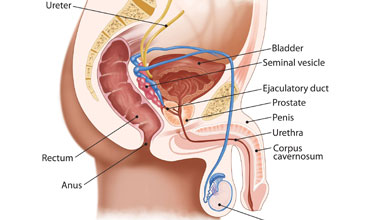Ultrasonographic Prediction of Prostatic Enlargement in Urualla Imo State, Nigeria

Abstract:
Background: The prostate is a reproductive gland found
in males. It is responsible for the production of the fluid that carries sperm during
ejaculation. The prostate gland usually enlarges with age and eventually gets to
a size when it causes obstruction to urine flow which is the most common symptom.
A small amount of prostate enlargement is present in many men over age 40. Two common
identifiable causes of prostatic enlargement are benign prostatic enlargement and
prostatic cancer. Ultrasonography is a non-invasive non ionizing imaging method
that uses sound waves to evaluate internal organs of the body. Aim: The main objectives of this research were to determine
the percentage of population with prostatic enlargement, to ascertain relationship
of prostatic enlargement with age. Method:
Prospective study design was used and data collected was focus on men from the age
group of 50 years and above. Results: The
average age of those screened was 63.11+/-7.85years. There was a higher age average
of 64.28years for those with prostatic enlargement when compared with normal subjects
with average age of 62.33 years. Conclusion: Ultrasonographic evaluation of prostatic volume is an important screening tool
for both benign prostatic enlargement and prostate cancer.
Keywords: Prostatic enlargement, Ultrasonogragph.
References:
[1.]
National Institute
of Diabetes and Digestive and Kidney Diseases (NIDDK), National Institutes of Health
(NIH), September, 2014.
[2.]
Review Serenoa repens
for benign prostatic hyperplasia.[Cochrane Database Syst Rev. 2009]
[3.]
Review Serenoa repens
for benign prostatic hyperplasia.[Cochrane Database Syst Rev. 2012]
[4.]
Tacklind J, MacDonald
R, Rutks I and Wilt T.J. (April 2009). Cochrane Database Syst Rev. 2009 Apr 15;
(2):CD001423.
[5.]
Tacklind J, Macdonald
R, Rutks I, Stanke J.U and Wilt T.J. (December 2012). Cochrane Database Syst Rev.
2012 Dec 12; 12:CD001423.
[6.] Wilt T.J, Macdonald R, Ishani A, Rutks I, Stark G. (May,
2011). Cochrane Database Syst Rev. 2011 May
11; (5):CD001042.

